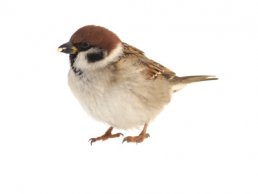How to Safely Control Baby Birds

Identifying Baby Birds
Homeowners may see baby birds of various ages in their yards. Identifying a baby bird begins with knowing its life stages. These include:
- Hatchling: A baby bird that recently hatched from its egg.
- Nestling: Naked baby birds who rely on the parents for survival.
- Fledgling: Independent birds with most of their feathers.
Recognizing a baby bird’s species may require an expert. Fledglings often begin life with different plumage than their parents, gradually gaining their adult colors and patterns as they grow.
What Do Baby Birds Eat?
Baby birds eat insects and worms brought to them by their parents. They cannot feed themselves and must consume frequent meals. Some will beg for food with high-pitched chirps.
Baby Bird Problems
Depending on the location, a nest of baby birds in the yard may create significant problems or go unnoticed. Species that nest in cavities often build their homes directly on house ledges, light fixtures, and eaves. Trying to exclude birds becomes harder when there is a nest involved, as some varieties are protected by law.
In addition, birds are prey animals for other types of nuisance wildlife. The presence of eggs or baby birds may draw predators to the area, including raccoons, snakes, and foxes.
Baby Bird Removal
Young birds can carry the same mites, ticks, and bacteria as adults. As a result, property owners should avoid any contact with them. Call in the specialists at Critter Control for help with removing these animals safely.
Learn more about bird removal.